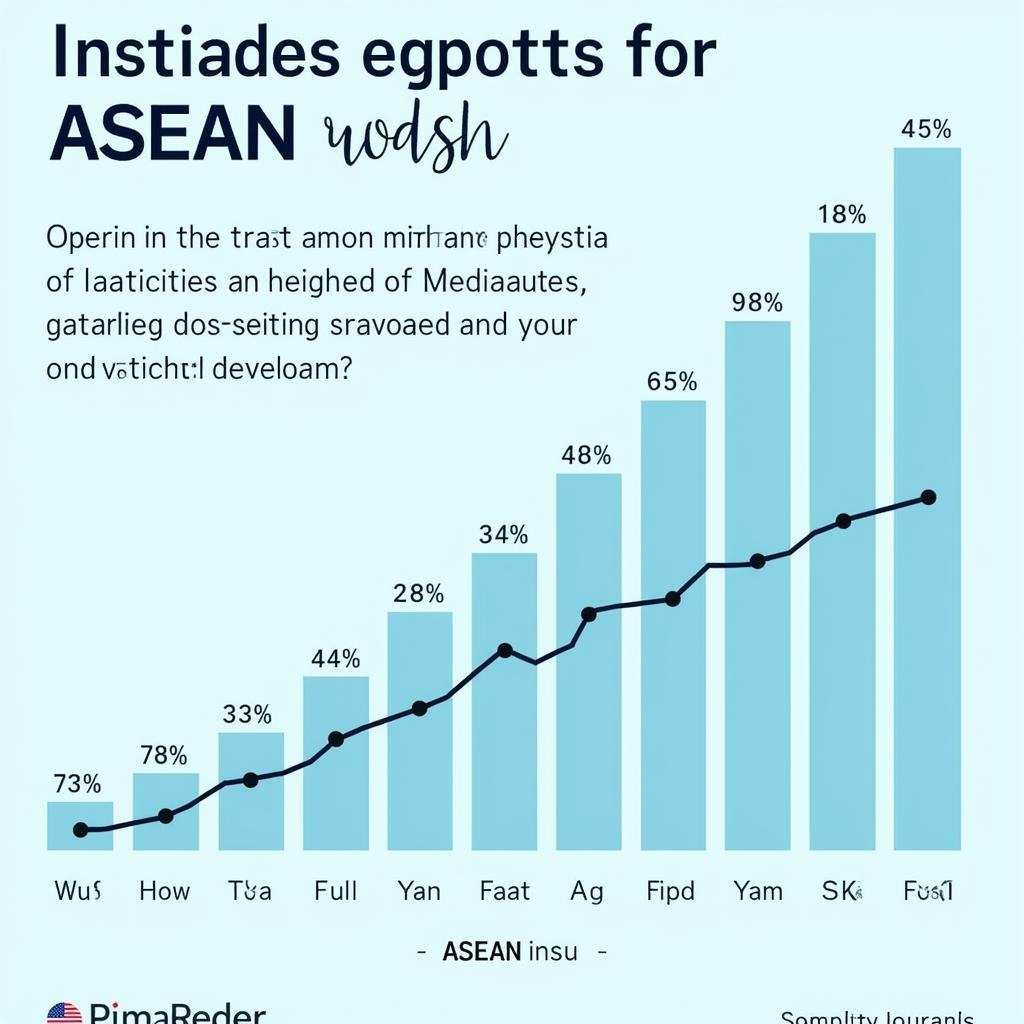Understanding Asean Basic Knowledge is crucial for anyone interested in Southeast Asia’s political, economic, and socio-cultural landscape. This vibrant region, home to over 650 million people, is a melting pot of cultures, languages, and religions, bound together by the Association of Southeast Asian Nations (ASEAN). This comprehensive guide will equip you with a foundational understanding of ASEAN, its history, member states, and its significance on the global stage.
What is ASEAN? A Deep Dive into the Basics
ASEAN, officially the Association of Southeast Asian Nations, is a regional intergovernmental organization comprising ten Southeast Asian countries: Brunei, Cambodia, Indonesia, Laos, Malaysia, Myanmar, the Philippines, Singapore, Thailand, and Vietnam. Established on 8 August 1967, with the signing of the ASEAN Declaration (Bangkok Declaration), ASEAN aims to promote regional cooperation and integration in Southeast Asia. The organization focuses on accelerating economic growth, social progress, cultural development among its members, and promoting regional peace and stability.
A Brief History: From Conception to Current Day
ASEAN’s formation was driven by a shared desire among the founding members to address common challenges and foster regional stability during a period of significant geopolitical change. The Cold War, coupled with regional conflicts, underscored the need for a unified front. Over the decades, ASEAN has expanded its membership and broadened its scope, evolving into a significant player in global affairs.
ase focused cardiac ultrasound
Understanding the Pillars of ASEAN: The Three Cs
ASEAN’s activities are guided by three pillars: the Political-Security Community, the Economic Community, and the Socio-Cultural Community. These interconnected pillars work synergistically to achieve ASEAN’s overall objectives. The Political-Security Community aims to enhance cooperation in maintaining regional peace and security. The Economic Community focuses on creating a single market and production base, facilitating the free flow of goods, services, investment, and skilled labor. The Socio-Cultural Community promotes cultural exchange, environmental protection, and social development.
Key Objectives and ASEAN Basic Knowledge Principles
ASEAN basic knowledge includes understanding its core principles. Central to ASEAN’s identity is its commitment to non-interference in the internal affairs of member states, consensus-based decision-making, and the peaceful settlement of disputes. These principles underpin ASEAN’s approach to regional cooperation and integration.
ASEAN Member States: A Tapestry of Diversity
ASEAN is a region of incredible diversity, encompassing a wide array of cultures, languages, and religions. Each member state brings unique strengths and perspectives to the organization, contributing to its dynamism. From the bustling city-states of Singapore to the agrarian landscapes of Laos, ASEAN’s diversity is a testament to its richness.
Why is ASEAN Important? Its Role in the Global Arena
ASEAN plays a crucial role in fostering economic growth, political stability, and socio-cultural development in Southeast Asia. Its collective economic power has attracted significant foreign investment, transforming the region into a global manufacturing hub. ASEAN also serves as a platform for dialogue and cooperation on regional security issues, promoting peace and stability in a strategically important part of the world.
ano ang asean summit wikipedia
ASEAN’s Future: Challenges and Opportunities
While ASEAN has made significant strides, it faces numerous challenges, including economic disparities among member states, territorial disputes, and the need to strengthen regional integration. However, ASEAN’s collective potential remains immense, and with continued cooperation and commitment, it is poised to play an even greater role in shaping the future of Southeast Asia and the global landscape.
 ASEAN Future Economic Growth
ASEAN Future Economic Growth
“ASEAN’s strength lies in its unity in diversity,” notes Dr. Anya Sharma, a leading Southeast Asian economist. “The ability of member states to collaborate despite their differences is a testament to the organization’s enduring power.” Echoing this sentiment, political analyst, Mr. Wei Lee, adds, “ASEAN’s commitment to peaceful dialogue and consensus-building provides a model for regional cooperation worldwide.”
In conclusion, understanding ASEAN basic knowledge is essential for navigating the complexities of this dynamic region. From its historical roots to its future aspirations, ASEAN remains a vital force in shaping the global landscape. By embracing its diversity and working towards shared goals, ASEAN can continue to drive progress and prosperity for its member states and the wider world.
FAQ
- What does ASEAN stand for?
- How many countries are in ASEAN?
- When was ASEAN established?
- What are the main objectives of ASEAN?
- What are the three pillars of ASEAN?
- What are some of the challenges facing ASEAN?
- How does ASEAN contribute to the global economy?
For support, please contact us at Phone Number: 0369020373, Email: aseanmediadirectory@gmail.com, or visit our address: Thon Ngoc Lien, Hiep Hoa, Bac Giang, Vietnam. We have a 24/7 customer service team.